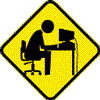123runner has partially answered you but here is the tutorial.
MEMTEST86 TUTORIAL
Windows users will want the "Pre-Compiled package for Floppy (DOS - Win)" or the Pre-Compiled Bootable ISO (.zip) depending upon your preference.
For the iso, unzip and save the iso to the hard drive, then burn to cd with your favorite burning application.
For the floppy, double-click on the "install.bat" file, put the floppy in as prompted, wait for it to write.
Neither resulting disk will be visible to Windows, so don't try to explore it.
Put the disk in and boot with it. For the first tests, you need to test with all of the ram that you plan to use installed. You also need to run at the bios settings that you plan to use. Let it run the seven default tests. Each set of seven tests is a "pass". It will run pass after pass forever until you reboot.
You can use the keyboard shortcuts on the bottom of the screen to select a single test to run if it is just one that is giving you errors.
Any errors, even one, is a bad sign and needs to be resolved before you can expect to install the OS or run reliably. At stock speeds, usually one pass is enough to find problems. If overclocking, may want to run for a longer period (hours? overnight?) before you settle on settings that you want to stay with.
Errors consistently at the same addresses can indicate ram that has physical flaws. Any manufacturer should replace memory with this problem free of charge. Errors that are inconsistent (show up every other pass) or are from different addresses might mean the system is overclocked a bit too far. You can remove sticks and repeat the tests to try to isolate problems to one stick or the other.
Windows based hardware diagnostic utilities like Norton Systemworks often falsely reports or misidentifies problematic hardware. We've received false memory complaints from customers that had Windows based hardware diagnostic utilities that reported memory errors. Yet they test fine when we test them with Memtest86 or our $25,000 hardware based memory tester. As an independent technician I would loathe the times when I had to work on computers that were loaded with Windows based diagnostic software. They always caused more problems than they fixed! Windows based diagnostic programs are a very very bad idea. You've got too many drivers, and other software programs running at the same time to allow for an accurate diagnoses of computer hardware problems.
Please be aware that not all errors reported by Memtest86 are due to bad memory. The test implicitly tests the CPU, L1 and L2 caches as well as the motherboard. So if the memory diagnostic software reports errors, keep in mind that this doesn't mean that there is definitely a problem with the memory module as other computer problems can cause a memory module to fail testing. It's possible that there is an incorrectly set BIOS setting, other hardware problems that are causing the memory test to fail, or the computer is accidentally overclocked higher than you thought. There is of course the possibility that a memory module is bad but you can only be sure of that if the BIOS settings are checked and other hardware problems are ruled out.
If Memtest86 reports errors, the best way to avoid incorrectly diagnosing the problem as being caused by a bad memory module is to swap in a different memory module. If you don't have a different memory module to troubleshoot with, or if swapping out the memory doesn't help, remove all unnecessary devices from the computer (all you need to run the test is a motherboard, CPU, floppy drive, power supply, video card, and only test one memory module at a time). If that troubleshooting step doesn't help then try swapping the power supply, video card, memory module, and CPU if possible. If removing or swapping devices did help, re-install them one at a time to find the culprit. If removing or swapping components doesn't help, then the memory module should be replaced.
SRX660
















 Sign In
Sign In Create Account
Create Account

